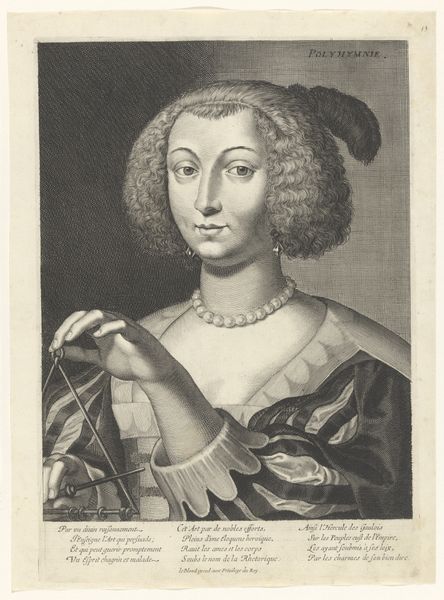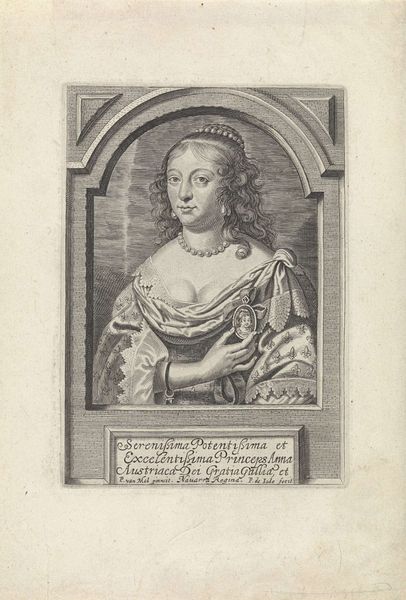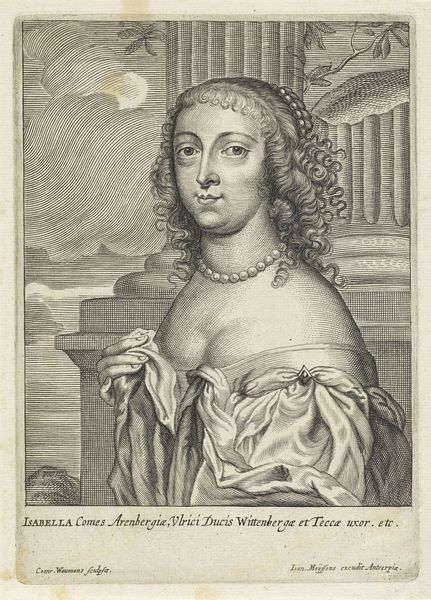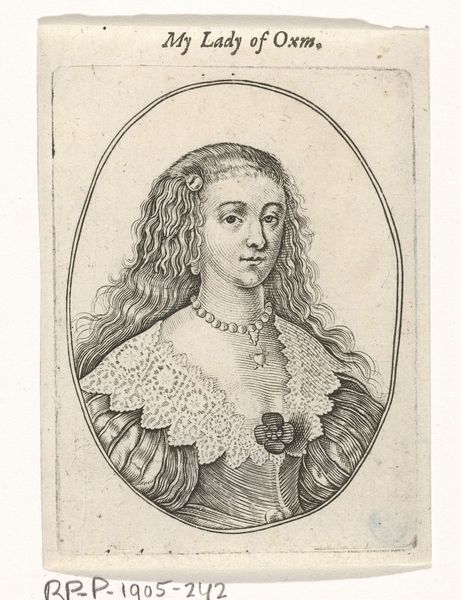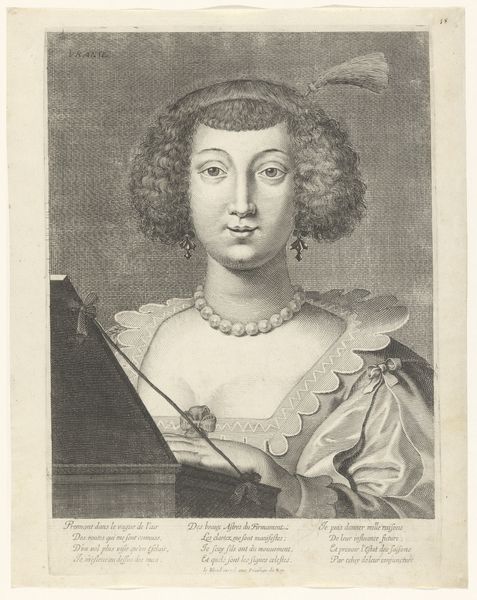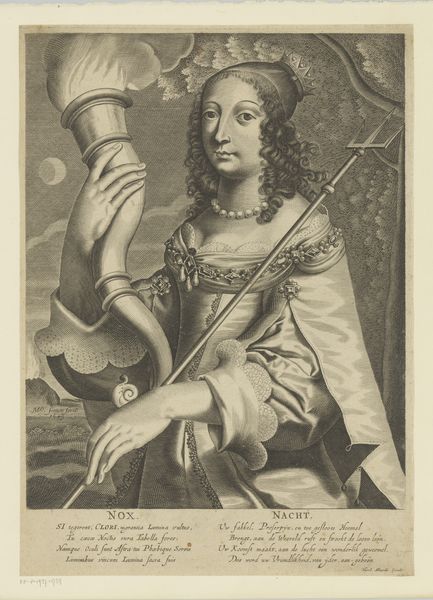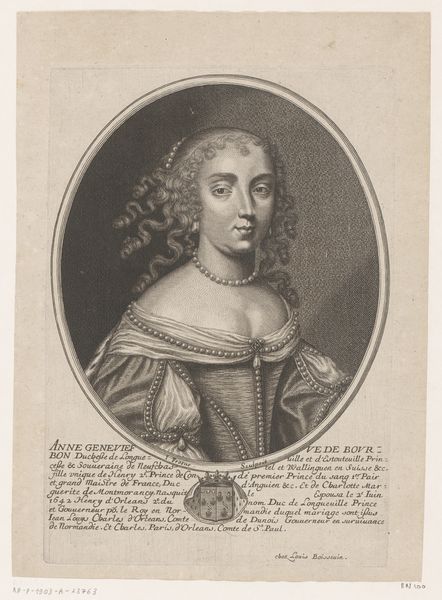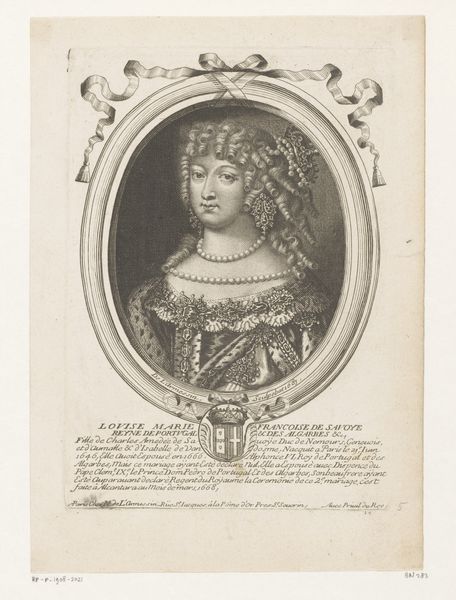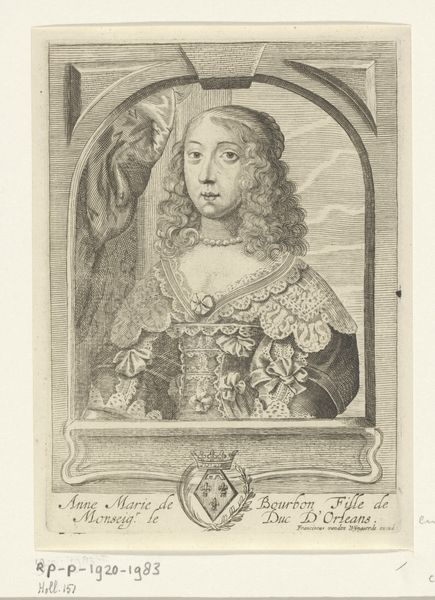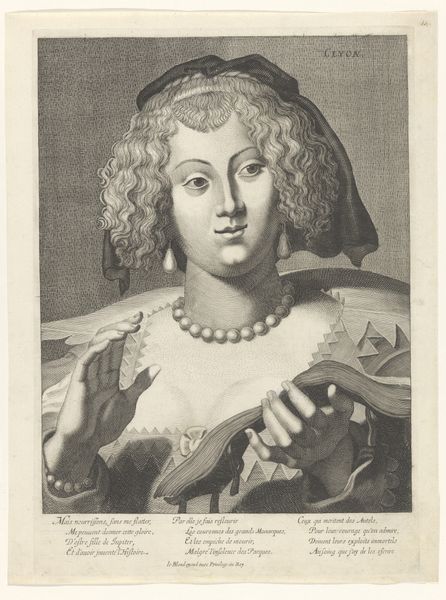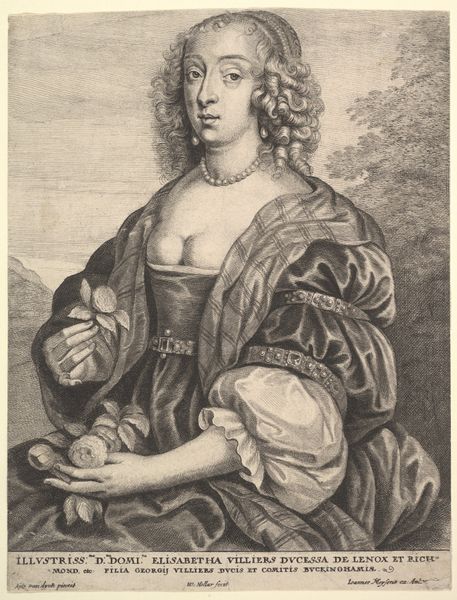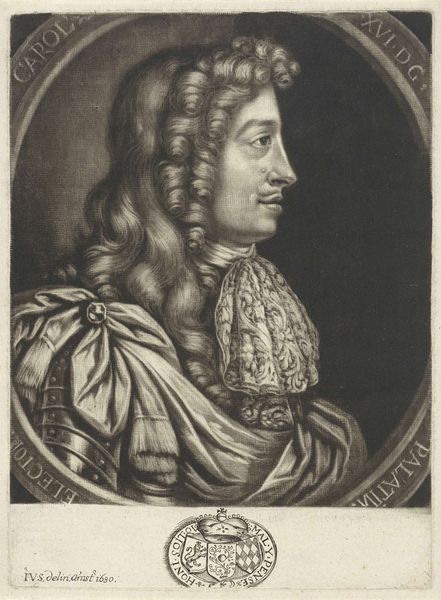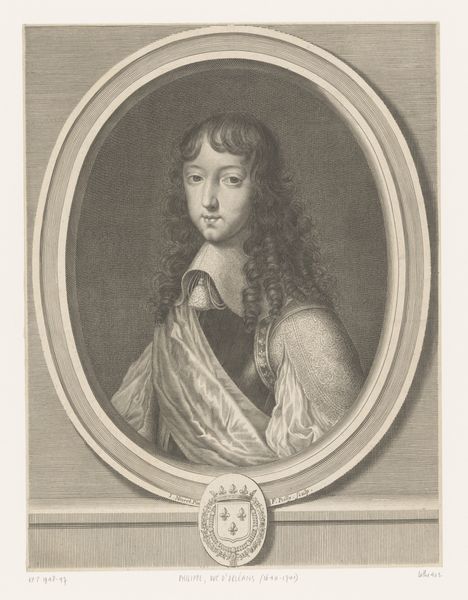
print, engraving
#
portrait
#
baroque
# print
#
old engraving style
#
portrait reference
#
pencil drawing
#
portrait drawing
#
history-painting
#
engraving
Dimensions: height 320 mm, width 280 mm
Copyright: Rijks Museum: Open Domain
Editor: So, here we have "Kalliope," an engraving by Jean Leblond, dating back to around 1630. There’s a certain calmness about this piece, the subject’s steady gaze and delicate tambourine—though rendered with such meticulous lines! What do you see in this work? Curator: Well, beyond the obvious mastery of line and shadow that was so characteristic of Baroque prints, I'm struck by her directness, the way Kalliope, muse of epic poetry, isn’t mythologized into some unreachable ideal. Leblond brings her down to earth, gives her this incredibly human, almost knowing gaze. Have you ever noticed how much personal expression is revealed with simple, yet expert lines? It almost reminds me of my great aunt’s drawings! The detail makes the woman on display become incredibly knowable, familiar somehow. Do you get that feeling as well? Editor: I see what you mean. There’s an accessibility to her. The gaze is less distant and more engaging. She also doesn’t seem preoccupied, she knows she's being painted. Curator: Exactly! And think about the context. Printmaking at this time allowed for the wider distribution of images. It made art more accessible, just as Kalliope herself becomes more accessible here. This allows us, centuries later, to encounter these people. Art's so good, right? Editor: That's really interesting. I had never considered that prints actually played a role in increasing access to art. That makes me wonder if there are current trends and emerging technologies that can play similar roles, even now. Curator: Food for thought, definitely! Thank you for taking the time to ponder over such masterfully rendered human subject!
Comments
No comments
Be the first to comment and join the conversation on the ultimate creative platform.
